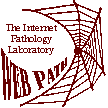|
A 22-year-old man has been noted by his friends to become withdrawn over the past 6 months. He socializes with them less and less. When playing cards with them, he annoys them by failing to keep track of what is going on. He has used up all his vacation days at work due to absences. When he fails to show up for work for 3 days in a row, and does not answer when telephone calls are made to his apartment, the office manager calls local law enforcement to check on him. A police officer finds the door locked. Upon obtaining a key from the apartment complex manager, he enters the apartment to find the man sitting in a corner, in a disheveled state, with the strong smell of urine. He does not respond when the officer addresses him. The officer calls for an ambulance. When the paramedics begin to move him, he becomes agitated and says, "No...no...there is a soldier standing by the door telling me not to move."
Questions:
3.1 What should be considered?
The behavioral manifestations could be consistent with schizophrenia, which is a disorder with abnormalities in communication, perception, thought processes, affect, social function, and volition. There may be positive symptoms or negative symptoms. Positive symptoms include delusions or hallucinations. Negative symptoms include anhedonia, decreased affect, diminished ability to perform activities of daily living, poor concentration, and decreased social function.
Could this be an acute psychosis due to illness or drug effects? A urine drug screen is negative for alcohol, benzodiazepines, barbiturates, opiates, cannabinoids, cocaine metabolite, and amphetamines.
Additional history:
On physical examination, he has a temperature of 36.8 C, pulse 85/min, respiratory rate 17/min, and blood pressure 100/65 mm Hg. There are no signs of trauma. His lungs are clear to auscultation and his heart rate is regular with no murmurs. The abdominal examination is unremarkable. The neurologic examination shows cranial nerves II-XII intact. Motor and sensory function is intact, with 5/5 motor strength in all extremities, but with motor rigidity noted. A tremor of his outstretched hands is noted.
He is admitted to the hospital psychiatric ward for 3 days, under statute, for evaluation and observation.
3.2 What pharmacologic therapy may be indicated for treatment?
Haloperidol (Haldol ®) is the standard drug, but newer "atypical antipsychotics" such as aripiprazole, clozapine, olanizapine, and risperidone are becoming more widely used.
3.3 Explain the mechanism of action of the drug therapy.
Haloperidol blocks D2 dopamine receptors in the mesolimbic and mesocortical regions of the brain.
The "atypical" agents generally block D3 or D4 receptors, as well as 5-HT2 receptors.. The atypical agents are more effective in reducing negative symptoms and in some psychoses that are refractory to haloperidol.
The neuroleptic malignant syndrome (NMS) is a potentially fatal complication of antipsychotic drug therapy. Affected patients may have hyperthermia, muscle rigidity, rhabdomyolysis, acute renal failure, altered mental status, irregular pulse or blood pressure, tachycardia, diaphoresis, and dysrhythmia.
|



